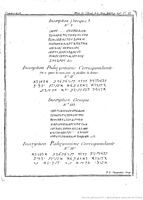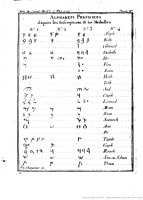Jean-Jacques Barthélemy facts for kids
Quick facts for kids
Jean-Jacques Barthélemy
|
|
|---|---|
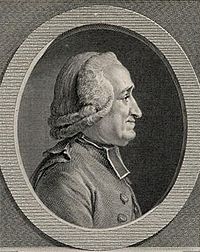 |
|
| Born | 20 January 1716 |
| Died | 30 April 1795 (aged 78) Paris, France
|
| Nationality | French |
| Known for | Decipherment of the Palmyrene alphabet and the Phoenician alphabet Author of Travels of Anacharsis the younger in Greece Member of the Académie française |
| Title | Abbé |
Jean-Jacques Barthélemy (born January 20, 1716 – died April 30, 1795) was a French scholar. He was the first person to figure out how to read an ancient language that no one could understand anymore. He successfully deciphered the Palmyrene alphabet in 1754. Later, in 1758, he also deciphered the Phoenician alphabet.
Contents
Early Life and Learning
Jean-Jacques Barthélemy was born in a town called Cassis in Provence, France. He started his studies at a school in Marseilles. He later studied philosophy and theology at a Jesuit college. He also attended a seminary, which is a school for people who want to become priests.
While preparing to become a priest, he became very interested in ancient languages from the East. A friend also introduced him to the study of old objects and coins. This led him to become an expert in numismatics, which is the study of coins and medals.
A Career in History
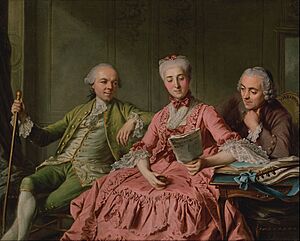
In 1744, Barthélemy moved to Paris. He got a job helping Claude Gros de Boze, who was in charge of the Royal Collection of Medals. This collection held many valuable ancient coins and medals.
In 1753, Barthélemy took over from de Boze as the head of the collection. He stayed in this important role until the French Revolution. During his time, he almost doubled the number of items in the collection.
Travels and Recognition
In 1755, he traveled to Italy with the French ambassador, the duc de Choiseul. He spent three years there doing archaeological research. Choiseul thought very highly of Barthélemy. When they returned to France, Barthélemy lived in Choiseul's home and received many benefits from him.
In June 1755, he was chosen as a Fellow of the Royal Society in London. This was a big honor for scientists and scholars. In 1789, after he published his famous book, Travels of Anacharsis the Younger in Greece, he became a member of the Académie française. This is one of France's most important groups for arts and literature.
Challenges During the Revolution
During the French Revolution, Barthélemy faced difficulties. In September 1793, he was arrested because he was seen as an aristocrat. He was put in prison for a few days. However, the Duchess of Choiseul quickly told the leaders about his arrest. They ordered his immediate release.
In 1793, he was offered the job of librarian at the National Library. He turned down this offer. Instead, he went back to his old job as the keeper of medals. He added many valuable items to the national collection. Sadly, he lost all his money during the Revolution and died in poverty.
Important Discoveries
Barthélemy was a pioneer in understanding ancient languages. He was the first to successfully decipher, or figure out, how to read ancient languages from the Middle East.
Reading the Palmyrene Alphabet
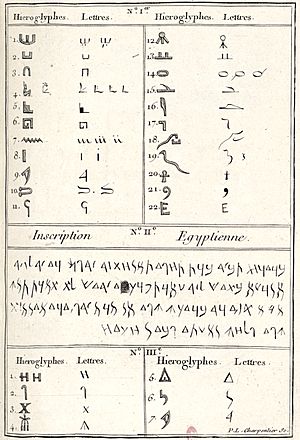
People had seen examples of Palmyrene writing since 1616. But clear copies of Palmyrene and Greek writings side-by-side were not available until 1753. These were published in a book called Les Ruines De Palmyre.
Barthélemy used these new, accurate copies of bilingual (two-language) inscriptions. He deciphered the Palmyrene alphabet in 1754, almost overnight! He mainly used the names of people and places, which were written in both languages, to figure out what each letter meant.
Reading the Phoenician Alphabet
Understanding Egyptian Hieroglyphs
Jean-Jacques Barthélemy worked with Anne Claude de Caylus to study ancient Egyptian writing. They realized that some Egyptian scripts, which were not the main hieroglyphs, seemed to use letters that came from hieroglyphs. This idea was published in 1752.
Barthélemy also made another important suggestion in 1762. He thought that the signs inside Egyptian cartouches (oval shapes with names) probably stood for royal names. This idea was later confirmed by Champollion, who fully deciphered hieroglyphs.
The Famous Journey
Barthélemy wrote many scholarly books about ancient times. But his most famous work is Travels of Anacharsis the Younger in Greece. This book was published in four volumes in 1787. He had worked on it for thirty years, starting in 1757.
The book tells the story of a young man from Scythia named Anacharsis. He travels to Greece to learn. He visits different Greek cities, colonies, and islands. Then, he returns home in his old age to write about his journey. This happens after the Macedonian hero (Alexander the Great) defeated the Persian Empire.
In the book, Anacharsis describes the customs, government, and ancient objects of the places he visited. The book also includes detailed sections on Greek music, Athenian literature, and the daily life of the surrounding states.
Even though modern studies have updated some of the details in the Voyage, Barthélemy's goal was not just to list facts. He wanted to give his countrymen an interesting way to learn about Greek civilization.
Other Writings
Barthélemy also wrote several essays about ancient languages and archaeology. These were first read at the Academy of Inscriptions and Belles-Lettres. He also wrote a novel called Les amours de Caryte et de Polydore, which showed ancient customs. He also wrote his own Mémoires, which are like a diary of his life.



